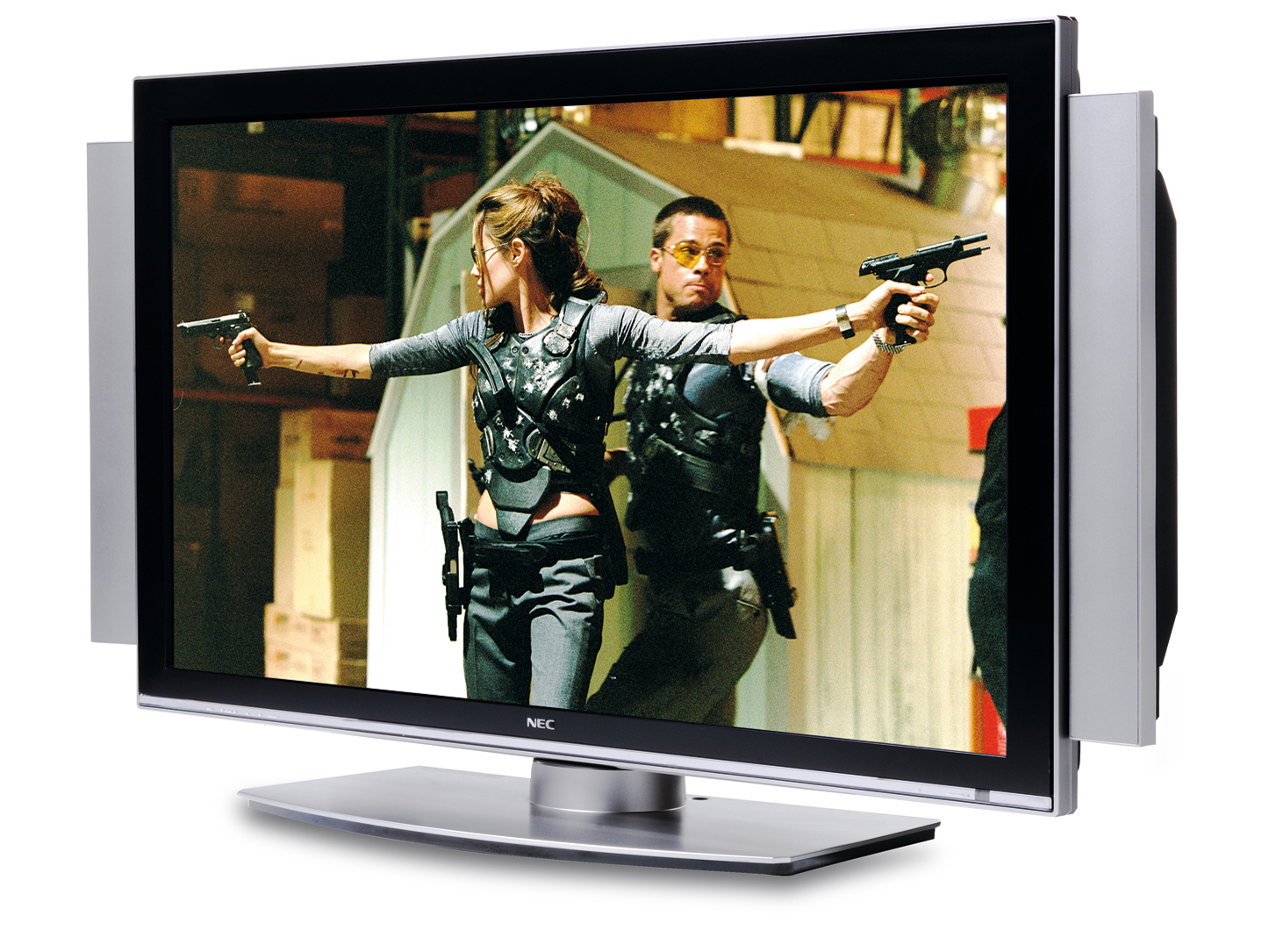TechRadar Verdict
A remarkable screen thats on the pricey side but is NECs best to date
Pros
- +
Attractive
Good HD pictures
Cons
- -
Pricey
No digital tuner
Why you can trust TechRadar
NEC is a real force in the business side of the plasma market, with its screens that have high prices, lack tuners, Scarts and speakers, and that are tailored for PowerPoint presentations than playing video playback. But the 50XR6G might put some of these issues right.
Things start reasonably well, thanks to a quite attractive matt black finish, offset by neat silver trim and slick little translucent wedge along the bottom edge.
However, the 50XR6G's domesticity is knocked by the discovery that it doesn't have a tuner (an external tuner box is available for £160), or Scarts. And, as usual for this kind of display, speakers are an optional extra that cost around £310.
In other respects the 50XR6G's connectivity is impressive, with two HDMI sockets being joined by two component video inputs, PC VGA jack and an RS232 control port. What's more, you can connect Scart sources to a set of component jacks using a suitable adaptor (although one isn't included with the TV).
The 50XR6G's key specifications make solid if uninspiring reading, with a decent claimed contrast ratio of 3000:1, a native resolution of 1365 x 768, and compatibility with the 720p and 1080i hi-def formats. However, we couldn't get the screen to show 1080p sources, despite its claims of compatibility in the screen's manual.
Features are plentiful. There's a healthy set of picture-in-picture options, a cinema mode, gamma adjustments, colour tuning and noise reduction. What's more, there are six slots for storing preferred video settings.
Overscanning can be turned off to allow direct mapping of 720p sources, to show images at their original resolution, and you can zoom into the picture by as much as 900 per cent.
Business to home
Put to work on a Sky HD broadcast of Mr & Mrs Smith, the NEC suddenly springs to life in unexpectedly impressive fashion.
The picture is outstandingly sharp, with every pixel of detail during highly textured scenes being perfectly rendered. This sharpness isn't harmed by any video noise problems, such as colour moiré or dot crawl. Particularly pleasing is the lack of plasma's common problems, such as dithering covering skin tones during camera pans.
The 50XR6G's colours are also much better than anything NEC has managed before, combining genuine vibrancy during with some believable skin tones. Reds and greens don't look nearly as orange and sickly respectively as we have expected.
The picture is bright but, impressively, it has very good black level response, with the darkest parts of the picture not only very slightly greyed over, but also retain exemplary shadow detail, making them look deep and well-scaled.
The optional speakers are nearly as good as the pictures. They're powerful with an impressively expansive dynamic range, meaning they deliver even full-on action scenes like the shootout in the Kwik Mart with vigour and clarity.
With good 50in plasma TVs from the likes of Panasonic and Samsung starting at as little as £1,500 these days, the 50XR6G's £2,400 asking price - without a tuner, speakers and stand - make it a bit pricey.
However, the NEC's plasma is cheaper than Pioneer's revolutionary new models, and although not in quite the same league, the 50XR6G is superb and NEC's best yet.
Tech.co.uk was the former name of TechRadar.com. Its staff were at the forefront of the digital publishing revolution, and spearheaded the move to bring consumer technology journalism to its natural home – online. Many of the current TechRadar staff started life a Tech.co.uk staff writer, covering everything from the emerging smartphone market to the evolving market of personal computers. Think of it as the building blocks of the TechRadar you love today.
